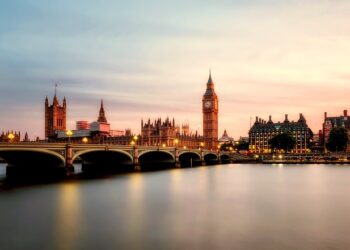Are you planning a trip to Croatia in 2023-2024 and wondering when is the best time to go? Look no further! Croatia is a stunning destination that offers breathtaking landscapes, rich history, and vibrant culture. Whether you’re seeking a beach vacation, exploring historical sites, or indulging in delicious cuisine, choosing the right time to visit can make all the difference. In this guide, we will explore the best seasons to visit Croatia in 2023-2024, taking into account weather, crowds, and specific activities you can enjoy during each period.
Croatia, with its enchanting Adriatic coastline and picturesque cities, is a year-round destination that offers something for every traveler. However, the ideal time to visit largely depends on your preferences. If you’re a sun seeker looking to relax on the beautiful beaches, the summer months of June to August are perfect, with hot temperatures and clear skies. On the other hand, if you prefer milder weather and fewer crowds, the shoulder seasons of spring (April to May) and autumn (September to October) offer pleasant temperatures, blooming nature, and a more tranquil atmosphere. So, whether you’re planning a summer getaway or a serene off-season adventure, Croatia awaits you with its timeless charm.
What is the best time of year to visit Croatia in 2023-2024?
The best time to visit Croatia in 2023-2024 is during the spring and autumn seasons. From April to June and September to October, the weather is mild and pleasant, making it ideal for outdoor activities and sightseeing. The temperatures during these months range from 15°C to 25°C (59°F to 77°F), which is perfect for exploring historical sites, hiking, and enjoying the beautiful beaches.
During the spring and autumn, Croatia experiences fewer crowds compared to the peak summer months, allowing you to enjoy popular attractions without the hustle and bustle. Additionally, accommodation prices are generally lower during these off-peak seasons, making it more affordable to visit Croatia.
What is the weather like in Croatia during the summer months?
During the summer months of July and August, Croatia experiences high temperatures and an influx of tourists. The weather is hot and sunny, with temperatures ranging from 25°C to 35°C (77°F to 95°F). The coastal areas, such as Dubrovnik and Split, can get quite crowded during this time as tourists flock to the beautiful beaches.
While summers in Croatia offer great opportunities for swimming and beach activities, it is important to note that popular tourist destinations can be overcrowded and accommodation prices tend to be higher. If you prefer a more relaxed and peaceful vacation, it may be best to visit Croatia during the spring or autumn seasons.
What is the weather like in Croatia during the winter months?
During the winter months of December to February, Croatia experiences colder temperatures, especially in the northern regions. The coastal areas, however, have a milder climate with temperatures ranging from 5°C to 15°C (41°F to 59°F). Inland regions, such as Zagreb, can experience snowfall and freezing temperatures.
While Croatia may not be a traditional winter destination, visiting during the winter does have its charm. The cities are beautifully decorated for the holiday season, and you can experience a more authentic Croatian culture with fewer crowds. Winter sports enthusiasts can also enjoy skiing in the mountainous regions of Gorski Kotar and Plitvice Lakes National Park.
What are the advantages of visiting Croatia in the spring?
Visiting Croatia in the spring offers several advantages. The weather during this time is mild and pleasant, perfect for exploring the country’s stunning natural beauty and historical sites. The temperatures range from 15°C to 25°C (59°F to 77°F), making it comfortable for outdoor activities like hiking, cycling, and sightseeing.
Another advantage of visiting in the spring is the reduced number of tourists, allowing you to enjoy popular attractions without the crowds. Additionally, accommodation prices are generally lower compared to the peak summer season, making it more affordable to visit Croatia. Spring also brings beautiful blooming flowers and lush green landscapes, adding to the overall charm of the country.
What are the advantages of visiting Croatia in the autumn?
Autumn is also an excellent time to visit Croatia for several reasons. The weather is still pleasant, with temperatures ranging from 15°C to 25°C (59°F to 77°F), making it ideal for outdoor activities and sightseeing. The autumn foliage adds a beautiful touch to the landscapes, creating picturesque scenes.
One of the main advantages of visiting in the autumn is the reduced crowds. As the peak tourist season comes to an end, you can explore popular attractions and enjoy the beaches without the usual hustle and bustle. Additionally, accommodation prices are generally lower, allowing you to find great deals and save money during your trip.
Can I swim in the sea in Croatia during the spring?
While the sea temperature in Croatia during the spring may still be a bit chilly, it is possible to swim if you don’t mind cooler waters. The Adriatic Sea begins to warm up in April, with temperatures ranging from 15°C to 18°C (59°F to 64°F). By May and June, the sea temperatures increase to a more comfortable range of 18°C to 23°C (64°F to 73°F).
Many locals and tourists start swimming in the sea during the spring, especially in the southern coastal areas where the water tends to be slightly warmer. It’s a great time to avoid the summer crowds and enjoy the beautiful beaches before the peak tourist season begins.
What are the average temperatures in Croatia during the summer?
During the summer months of July and August, Croatia experiences high temperatures. In coastal areas, such as Dubrovnik and Split, the average temperatures range from 25°C to 30°C (77°F to 86°F), with occasional heatwaves pushing temperatures above 30°C (86°F).
It’s important to note that temperatures can vary depending on the region and time of day. Inland areas, like Zagreb, can have slightly lower temperatures compared to the coast. It’s advisable to dress appropriately, stay hydrated, and seek shade or air-conditioned spaces during the hottest parts of the day.
What are the average temperatures in Croatia during the winter?
During the winter months of December to February, temperatures in Croatia can vary depending on the region. Coastal areas generally have milder temperatures, ranging from 5°C to 10°C (41°F to 50°F), while inland regions, like Zagreb, can experience colder temperatures and occasional snowfall, with temperatures ranging from 0°C to 5°C (32°F to 41°F).
It’s important to pack warm clothing, especially if you plan to visit the inland areas. Layering is recommended as temperatures can fluctuate throughout the day. It’s also a good idea to check the weather forecast and road conditions if you plan on traveling to mountainous regions during the winter months.
Are there any festivals or events in Croatia during the spring?
Yes, Croatia hosts several festivals and events during the spring months. One of the most popular events is the Zagreb Time Machine, which takes place in April and showcases the city’s rich history and culture through various performances, exhibitions, and reenactments.
The Dubrovnik Summer Festival is another notable event, held from July to August, featuring an array of music, theater, and dance performances in the city’s historic venues. Additionally, many towns and cities host Easter celebrations with traditional customs, processions, and festive markets.
Are there any festivals or events in Croatia during the autumn?
Yes, Croatia offers a variety of festivals and events during the autumn season. The Dubrovnik International Film Festival, held in late September, showcases a selection of international and Croatian films, attracting filmmakers and cinema enthusiasts from around the world.
Another notable event is the Zagreb Film Festival, held in November, which focuses on independent and avant-garde cinema. In addition to film festivals, many towns and cities celebrate the wine harvest season with vineyard tours, wine tastings, and traditional festivities.
Is it necessary to book accommodation in advance during the peak summer season?
Yes, it is highly recommended to book accommodation in advance if you plan to visit Croatia during the peak summer season. July and August are the busiest months, and popular tourist destinations can get fully booked quickly.
By booking in advance, you ensure that you have a place to stay and can often secure better rates. It’s advisable to research and book accommodations several months in advance, especially if you have specific preferences or if you plan to visit popular coastal areas like Dubrovnik or Hvar.
Are there any national parks in Croatia worth visiting in the spring?
Yes, Croatia is home to several stunning national parks that are worth visiting in the spring. One of the most famous is Plitvice Lakes National Park, known for its cascading waterfalls and crystal-clear lakes. In the spring, the park comes alive with lush greenery and blooming flowers, creating a picturesque landscape.
Other national parks worth exploring in the spring include Krka National Park, with its impressive waterfalls and hiking trails, and Paklenica National Park, offering breathtaking canyons and rock climbing opportunities. The pleasant temperatures during the spring make it an ideal time to explore these natural wonders.
Are there any national parks in Croatia worth visiting in the autumn?
Absolutely! Croatia’s national parks are equally enchanting in the autumn season. Plitvice Lakes National Park, with its vibrant fall foliage, offers a breathtaking display of colors reflected in the lakes. The cooler temperatures and fewer crowds make it an ideal time to explore the park’s trails and enjoy its natural beauty.
Krka National Park is another park worth visiting in the autumn. The waterfalls are surrounded by lush vegetation, creating a picturesque scene. The hiking trails in Paklenica National Park also offer stunning autumn views and pleasant temperatures for outdoor activities.
What are the popular coastal destinations in Croatia during the summer?
Croatia is renowned for its beautiful coastal destinations, which attract numerous visitors during the summer. Some of the most popular coastal towns and cities include Dubrovnik, Split, Hvar, Zadar, and Rovinj.
Dubrovnik, with its stunning medieval walls and historic old town, offers a unique cultural experience. Split is known for its impressive Diocletian’s Palace and vibrant nightlife. Hvar, an island destination, offers beautiful beaches and a lively atmosphere. Zadar boasts Roman ruins and unique modern art installations, while Rovinj charms visitors with its picturesque streets and Venetian architecture.
What are the popular coastal destinations in Croatia during the autumn?
During the autumn season, some of the popular coastal destinations in Croatia remain attractive to visitors. Dubrovnik, with its rich history and stunning architecture, continues to enchant tourists. The city’s UNESCO World Heritage-listed old town is a must-visit, offering a unique blend of medieval and Renaissance charm.
Split also remains popular in the autumn, allowing visitors to explore Diocletian’s Palace and enjoy the city’s vibrant atmosphere. Zadar, with its ancient Roman ruins and beautiful coastline, offers a more relaxed experience. Rovinj, known for its romantic ambiance and picturesque streets, is also a great option for autumn travelers.
What are the local customs and traditions in Croatia during the spring?
During the spring, Croatia celebrates Easter with various customs and traditions. One of the most notable traditions is the Easter Sunday breakfast, where families gather to enjoy a special meal together. The breakfast typically includes colored eggs, ham, traditional Easter bread called “pinca,” and other local delicacies.
Another tradition is the “Čuvar” or “Guardian of the Fields” custom, where a young girl is chosen to guard the fields from evil spirits and ensure a successful harvest. This tradition involves dressing up in traditional costumes and performing rituals in the fields.
What are the local customs and traditions in Croatia during the autumn?
In the autumn, Croatia celebrates various customs and traditions. One of the most significant events is the grape harvest, which is celebrated with vineyard tours, wine tastings, and traditional festivities. The grape harvest is considered a time of joy and gratitude for the successful yield.
Another autumn tradition is the chestnut harvest, particularly in the region of Istria. Chestnut festivals are held, showcasing various chestnut-themed dishes and products. These festivals often feature live music, dancing, and family-friendly activities.
What should I pack when visiting Croatia in the spring?
When visiting Croatia in the spring, it is advisable to pack layers of clothing to accommodate the changing temperatures. Bring lightweight and breathable clothing for the mild daytime temperatures, along with a light jacket or sweater for cooler evenings.
Comfortable walking shoes are essential for exploring the cities and national parks. Don’t forget to pack sunscreen, a hat, and sunglasses to protect yourself from the sun. If you plan to swim, pack a swimsuit and a towel. It’s also a good idea to bring a travel adapter for your electronic devices, as Croatia uses European-style power outlets.
What should I pack when visiting Croatia in the autumn?
When visiting Croatia in the autumn, it’s important to pack layers of clothing to adjust to the fluctuating temperatures. Bring a mix of lightweight and warmer clothes, as temperatures can be mild during the day and cooler in the evenings.
It’s advisable to pack a waterproof jacket or umbrella, as autumn can bring occasional rainfall. Comfortable walking shoes are essential for exploring the cities and national parks. Don’t forget to pack sunscreen, a hat, and sunglasses for sunnier days. If you plan to swim, you may still want to pack a swimsuit, as some coastal areas may still have pleasant sea temperatures.
In conclusion, when planning your visit to Croatia in 2023-2024, it is important to consider the best time of year to fully experience the beauty and charm of this stunning country.
First and foremost, the summer months of June to August offer warm weather and longer days, making it the peak tourist season. During this time, you can indulge in various water activities along the stunning Adriatic coastline, explore historic cities such as Dubrovnik and Split, and immerse yourself in the vibrant local culture. However, it’s worth noting that popular tourist destinations can get crowded and prices may be higher during this period.
Alternatively, if you prefer a more peaceful and budget-friendly trip, the shoulder seasons of spring (April to May) and autumn (September to October) are ideal. During these months, the weather is still pleasant, allowing you to enjoy outdoor activities and sightseeing without the summer crowds. Additionally, you can take advantage of lower accommodation rates and enjoy a more authentic experience, mingling with the locals and exploring off-the-beaten-path destinations.
Lastly, if you are a fan of winter sports or wish to experience a different side of Croatia, the winter months of November to March offer a unique opportunity. The country’s mountainous regions transform into winter wonderlands, perfect for skiing, snowboarding, and other snow-related activities. You can also enjoy the festive atmosphere during Christmas markets and experience the rich cultural heritage of Croatia through traditional winter celebrations.
In conclusion, whether you prefer the bustling energy of summer, the tranquility of the shoulder seasons, or the thrill of winter activities, Croatia has something to offer throughout the year. Plan your visit wisely, considering your preferences and interests, and get ready for an unforgettable journey in this enchanting country.










